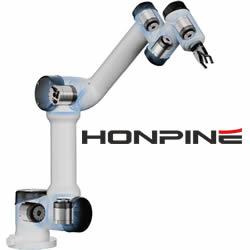Kessler Foundation Purchases Second Robotic Exoskeleton from Ekso Bionics
Ekso Bionics Holdings, Inc., a robotic exoskeleton company, announced today that Kessler Foundation, a global leader in rehabilitation research, has purchased a second exoskeleton, the Ekso GT, to be used in a new study examining the effectiveness of wearable robots for neuro-rehabilitation and gait training.
Kessler Foundation is one of the first organizations to integrate the most recent evolution of this technology, which will be used solely to study its efficacy for patients with hemiparesis who are less than three months post-stroke.
Karen Nolan, PhD, research scientist in Human Performance & Engineering Research and Mooyeon Oh-Park, MD, assistant director of Stroke Rehabilitation Research for Kessler Foundation, are in charge of the pilot study. The study plans to enroll 10 stroke inpatients from Kessler Institute for Rehabilitation to study patterns of mobility and gait parameters before using Ekso GT, during use and after use. They will measure several items including spasticity, range of motion and levels of assistance required in adults 18-75 years old.
"We're seeing that robotics in rehabilitation are having an increasingly positive impact on patient outcomes, and research such as this is key to furthering such progress," said Rodger DeRose, president and CEO of Kessler Foundation. "Exploring Ekso GT in the stroke population is an exciting new avenue for our mobility researchers."
Kessler Foundation has used Ekso Bionics' previous generation exoskeleton for clinical research in patients with spinal cord injury since October 2011. Melissa Pullia, PT, ATP, clinical manager for Ekso Bionics, will work with Kessler's clinical team to integrate the newest device by training their physical therapists and researchers on new technology features which provide utility and efficacy specifically for stroke survivors. Today marks the completion of the first round of training, an additional week of comprehensive training will commence in May.
"We're proud of the success Kessler has achieved with use of their Ekso among their patients with spinal cord injuries over the last two years," said Melissa. "Continuing to build on their clinical program by bringing Ekso to their stroke population is exciting. There have been notable preliminary findings and we are looking forward to helping them collect the data to quantify them."
Ekso Bionics designs, develops, and commercializes exoskeletons, or wearable robots, which have a variety of applications in the medical, military, industrial, and consumer markets. Exoskeletons are ready-to-wear, battery-powered robots that are strapped over the user's clothing, enabling individuals to achieve mobility, strength, and endurance not otherwise possible. Ekso Bionics' lead product, EksoTM, is a wearable bionics suit that enables individuals with any amount of lower extremity weakness to stand up and walk over ground. Ekso is forging a new frontier in rehabilitation for people living with the consequences of stroke, spinal cord injury and other neurological conditions affecting gait.
http://www.eksobionics.com/
Featured Product

HONPINE - Robot Reducers and Gearboxes
HONPINE is the leading supplier of drive reducers,rv reducer gearboxes,planetary reducers,drive actuators. We provide precision motion control reducers and gearboxes since 2018. We highly value cooperation with our customers and are committed to providing precision transmission solutions.
